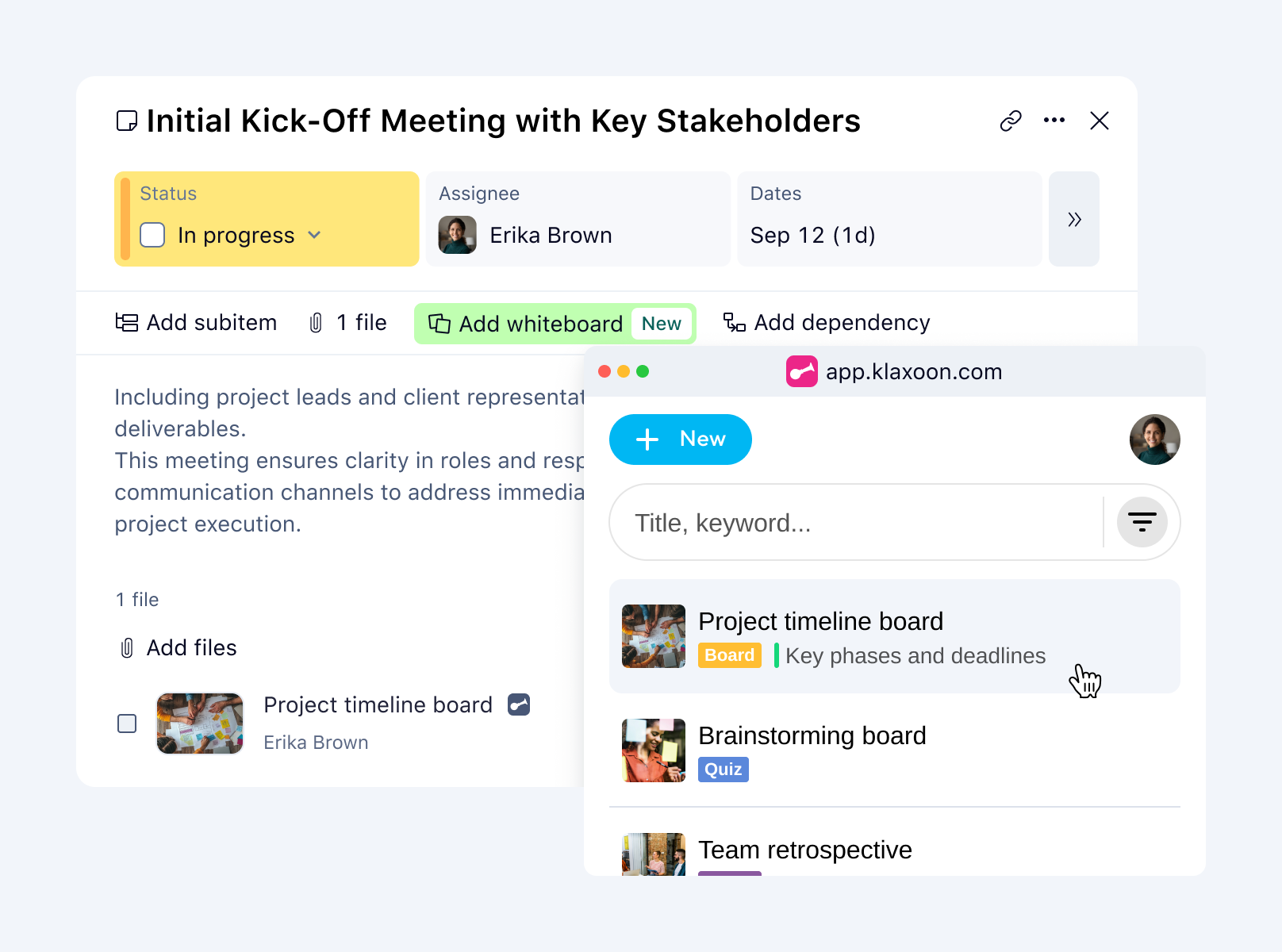Every copywriter knows that feeling. You’ve poured your heart and soul into a piece of work. It’s well-researched and carefully crafted. It’s a perfect balance of light and serious, casual and formal, engaging and informative, clean and error-free.
It’s also rejected. With enough commentary from the client to fill a sequel to “War and Peace,” plus a few notes that will leave you wondering if you should quit writing and start pottery making instead.
Criticism goes hand in hand with creative work, and learning how to deliver and receive it is vital for smooth collaboration, short feedback loops, and, more importantly, great results.
Want to know how I manage that here in Wrike? Let’s take a look at what works, what doesn’t, and what’ll take your copy from basic to brilliant.
The benefit of an optimized review process
I’ve been writing professionally for more than 15 years. In that time, I’ve seen a lot of changes, especially in the process of reviewing and approving my copy.
When I first started out in my writing career, I would submit my work in a Word document to a client or stakeholder and then wait until a newly saved version came back, complete with tracked changes and comments. I would then make changes, add more comments, and return it, until eventually, we ended up with a dozen files and a page so cross-stitched with red lines that it makes me twitch with the memory.
Fast forward to 2025. I’m now a Content Marketing Manager at Wrike, and our platform has made the whole process a dream. Now, this blog post will follow a fast, automated review workflow that looks like this:
- I write the article in Google Docs
- I add the link to a Wrike task and change its status to “Content Review”
- This automatically tags an assigned stakeholder, who will review it
- Once finished, she’ll change the status to “In Revisions,” which tags me to make any adjustments needed
- When I’ve completed those revisions, I’ll move it into “Ready for Publication”
The platform’s advanced customization means we can add extra statuses like “In Proofing,” “Waiting for Design,” or “Stakeholder Approval.” These all automatically tag the required people and then remind them if any delays occur. The seamless integration between Wrike, Google Docs, Figma, Grammarly, Adobe Acrobat, and more means we never have to leave our workspace to complete our creative work. It’s what our CMO, Christine Royston calls “a tech stack that makes collaboration effortless.”
This easy-breezy process makes working on live copy easy, with no added admin or stressful version control. This provides a really good bedrock for creative collaboration. The next part of the puzzle? Giving and receiving feedback — something I do regularly, as both a copywriter and a reviewer of other copywriters’ work.
How to give good feedback
Occasionally, I might hit a home run, and my work is approved with “no notes,” as the cool kids say. The majority of the time, though, stakeholders or clients have feedback in the form of suggestions, comments, or edits.
While this sounds simple, in practice, feedback can be fraught with potential issues, from crossed wires to bruised egos. If you want to avoid these hiccups and make your approval process fast and pain-free, here are three top tips to bear in mind:
1. Recognize your roles
It helps to remember that when you’re a stakeholder or reviewer, you’re an expert in your subject, while the copywriter is an expert in messaging. Most of us wouldn’t, for example, rewrite a developer’s line of code, a salesperson’s pitch, or an IT manager’s software fix. But because we all have an inherent understanding of language, we often find ourselves acting as an ad-hoc copywriter.
Mostly this is a good thing — fresh eyes can be very beneficial — but sometimes, it’s not, as inexperienced copywriters can weaken good work with extraneous information, overly technical language, and grammatically incorrect amendments. Focusing on your specialty when giving feedback can help maximize the team’s diverse skills. You can ensure your product or service is described accurately, while the copywriter can make the message polished, professional, and effective.
2. Make all criticism constructive
Reviewing copy properly is a time-consuming process, so it’s understandable that stakeholders often keep their comments brief. But it’s worth investing time and effort if you want to cut down on the number of edits and reviews required. So instead of “????,” you could write “Can we make this message softer and more personal? Mentioning our customer service might help.”
Also, remember, you’re critiquing the work, not the person. Try to keep your language neutral and your tone impersonal. That means instead of asking “Did you read the brief at all?” you could say “Can you double-check that you’ve included all the USPs mentioned in the brief?” That way, the creator can immediately work on revising the copy, rather than defending his or her role.
3. Limit the reviewing process
Have you noticed that many of today’s big-budget movies are all action and no story? I often wonder if the original script was good, but then notes from producers, directors, actors, and even studio executives flooded in. I’m going to guess that all of this feedback probably bent the work so far out of shape that the result is an enormously expensive fever dream with a plot that only makes sense to popcorn-munching seven-year-olds.
The best way to combat this problem is to limit the review process to as few stakeholders as possible — or assign one spokesperson (or AI tool) to condense it all into one set of cohesive notes.
How to receive criticism like a pro
On the other side of the table is the person receiving the feedback — the copywriter or copywriting team.
It’s not always easy to hear another person critique your work, but it’s just part of the job. The Medicis probably had “a few thoughts” for Michelangelo, right? I’m far from an Italian master, but over the years, I’ve picked up a few personal rules to help with the process:
1. Check your ego
That funny little line that made you titter as you typed it? It’s probably not half as good as you think it is, and needs to be cut. As Stephen King famously said, “Kill your darlings, kill your darlings, even when it breaks your egocentric little scribbler’s heart, kill your darlings.”
This is where an editor’s feedback is crucial, as it helps us see the faults we’re blind to. We’re very lucky here at Wrike to have talented editors within our team who help us hone our copy. They know instinctively what our readers will appreciate and understand, and our collaboration is a truly valuable part of the creative process. They can also spot an errant comma at 1,000 paces, which is something I’m forever grateful for!
An experienced copywriter will take this kind of criticism on the chin, accepting that outside eyes can and do help the end copy become cleaner, tighter, and better.
2. Stay flexible
Quite often, the feedback copywriters receive is subjective rather than objective, especially when the topic is close to the reviewer’s heart. This type of feedback involves preferences rather than binary right/wrong corrections. In theory, there’s nothing wrong with subjective edits, and they can help us write in a more authentic voice.
Sometimes, though, an individual content choice might contradict a house style, brand guidelines, or even best practice for copywriting generally. A common example is using industry jargon, which might make sense internally but could cause confusion externally.
This type of feedback can leave us copywriters in a bit of a bind, as we want to make our clients or stakeholders happy while also providing persuasive copy that will look professional when published. My answer in these circumstances? There are more than 170,000 words in the English language — let’s keep working together until we find the perfect combination.
3. Pick up the phone
While I’m old enough to remember the literal meaning of this, I mean it metaphorically here. Whether via a Slack huddle, a Zoom call, or even a face-to-face meeting, there’s a huge benefit of getting a copywriter and their client or stakeholder together.
In my experience, a five-minute catch-up can save a lot of time, effort, and potential for misunderstandings. Comments are great, but they lack the space for nuance and even niceties. Sometimes, when I feel that I’m missing something or unsure of how to proceed, I’ll arrange a call or set up a Klaxoon board and live-edit while speaking to my client or stakeholder. It’s amazing how much faster and more efficiently the job gets done — and how much better the work is as a result.

The client-copywriter relationship is a precious one, involving a lot of trust. When we combine strong feedback with creative flexibility, we can work together to make something really special. For us here at Wrike, that means award-winning copy, record-breaking campaigns, and a jam-packed library of resources for our community.
And for me, it means a job well done.
Call me converted, but the best advice I can give to a busy marketing team is to invest in a great collaborative work management platform. It’ll save you days of back-and-forths, dozens of different document versions — and your copywriters’ sanity.







